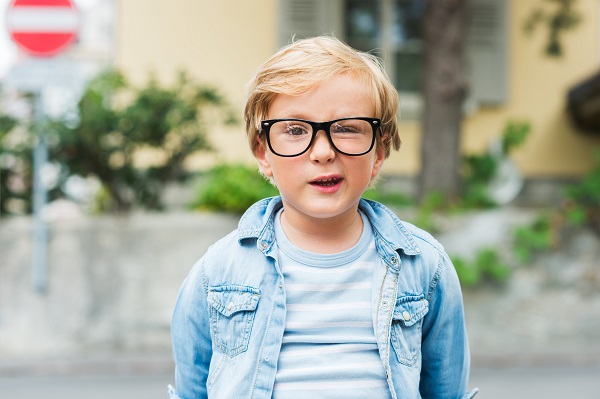And other reasons to protect your child’s eyes
The lesson of the classic film, “A Christmas Story”? It’s not just that mom is always right.
It’s that eye protection, no matter what age you are, is really, really important.
An eye injury, after all, isn’t quite the same as an injury on any other part of your body. They can be pretty painful—and not to put a downer on your day—they can in rare cases lead to blindness. But the great news? More than 90 percent—yes, 90 percent!—can be prevented just by taking a few simple precautions.
So get ready, little Ralphies…mom (or dad) have some more eye safety maxims for you.
“You’ll shoot your eye out.”
It’s not just the Red Ryder BB guns that are problematic. Any toy that shoots an object can hurt your eyes. Sticks used as swords or water balloon launchers also fall into this category. Even laser pointers can cause damage when pointed into someone’s eye. And don’t get me started on fireworks or paintball! So the rule is, wear protective goggles when playing with anything that shoots, put down the swords and point the lasers at the wall, not at each other.
“Don’t stare into the sun!”
Your skin isn’t the only organ that needs sun protection. In the same way that tanning can lead to skin cancer, over time, too much sun exposure to the eyes can lead to blinding disorders such as macular degeneration. It’s even more important to reduce sun exposure in kids since they’re outside far more often than most adults are. Sunglasses are a must—and when at the beach, wear sunglasses and a hat.
“Duck and avoid the elbows.”
Contact sports are a natural for eye protection. While you don’t want to wrap your child up in cotton wool, eye protectors are important, especially for kids who may have already sustained an eye injury while playing sports. Common sports where kids may wear protection are basketball, baseball, soccer, football, racquet sports and lacrosse.
“Power tools aren’t toys.”
Even my husband once got a piece of yard debris stuck in his eye while he was mowing the lawn without eye protection. Protection can be as simple as a pair of sunglasses, and when operating power tools like mowers or drills, they help keep dust and dirt from flying up and potentially abrading the eye surface.
“That’s what your eyelid is for.”
For younger children, falls may be a bigger cause of eye damage. But the good news is that in most cases, a fall might injure the area surrounding the eye, but is not likely to actually penetrate the eye. The eyelid in most instances will close by instinct to help keep the eye safe. But if your child’s eye is red or tearing up after a fall, it’s worth getting it checked out.
“Don’t rub!”
Was your child’s eye accidentally exposed to a chemical? Don’t rub, but instead, rinse the eye right away for at least 10 minutes. Don’t wait and try to run to the drugstore to get eye wash—cold tap water is fine, although if you have some eye wash at home, use it. Immediate action is the most important to ensure you dilute and flush the chemical from the eye.
A Closer Look
Eye protection also involves having your child’s eyes checked regularly. Your pediatrician typically begins checking your child’s eyes at age 3 or 4—or whenever your child is able to reliably identify shapes and colors on a pediatric eye chart! Eye exams usually happen again at ages 5, 6, 8, 10 and 12—and some pediatricians perform them annually.
As a parent, you might be the one to notice that your child is having trouble with his or her vision: anything from squinting or tilting their head to look at something to frequent headaches. If we see that a child’s vision is 20/40, that’s usually when we refer to a pediatric ophthalmologist.
But if your child has injured an eye, don’t be surprised if he or she is nervous to tell you (cue Ralphie, once again!). But look for these clues: light sensitivity, tearing or redness or inability to open their eye.
When it comes to treatment, eye drops or wearing a patch (yes! an excuse to play pirate) can help. But happily in many cases, the eye heals all on its own, with just a little TLC from mom or dad—and that’s where the mom from “A Christmas Story” was right once again.
From newborns to adolescents, kids come first at Children’s Hospital of Georgia. To find out more visit augustahealth.org/chog or call 706-721-KIDS (5437) to make an appointment for your child today.




